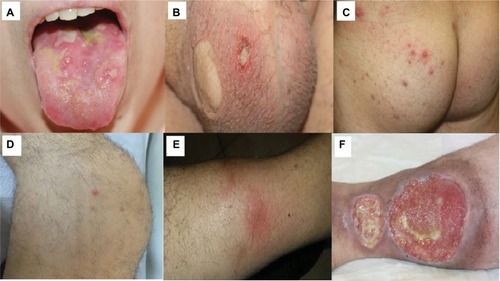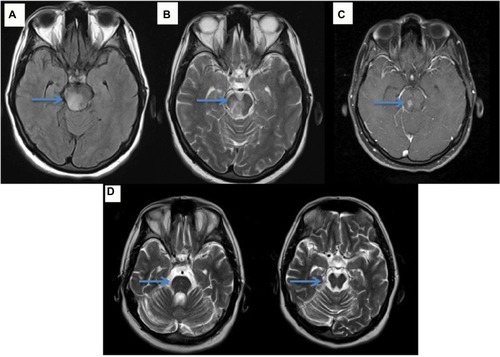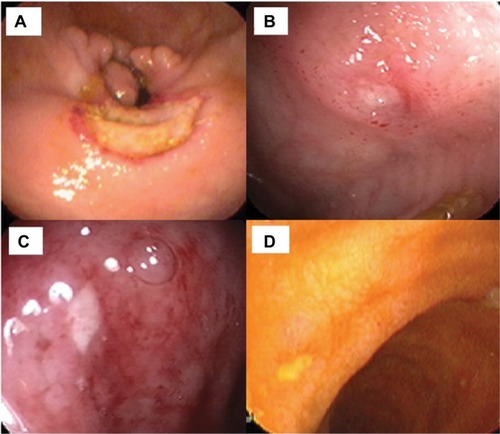Figures & data
Table 1 Diagnostic criteria sets for BS, ISG and ICBD
Figure 1 Mucocutaneous lesions of Behçet’s syndrome.
Notes: (A) OU; (B) GU with a scar; (C) PPL; (D) acne with arthritis; (E) EN and (F) leg ulcers.
Abbreviations: OU, oral ulcer; GU, genital ulcer; PPL, papulopustular lesions; EN, erythema nodosum.
Abbreviations: OU, oral ulcer; GU, genital ulcer; PPL, papulopustular lesions; EN, erythema nodosum.



